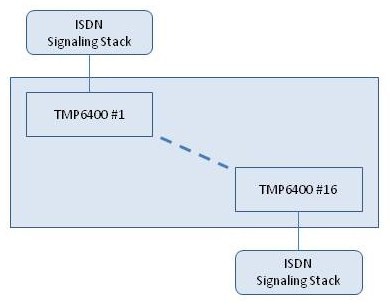Toolpack v2.2:ISDN
From TBwiki
(Difference between revisions)
Cboulanger (Talk | contribs) (→Supported ISDN variants) |
|||
| (One intermediate revision by one user not shown) | |||
| Line 11: | Line 11: | ||
Note: The trunks of each Tmedia or Tdev unit can be configured to have their own ISDN signaling stack. | Note: The trunks of each Tmedia or Tdev unit can be configured to have their own ISDN signaling stack. | ||
| − | |||
| − | |||
| − | |||
| − | |||
| − | |||
| − | |||
| − | |||
| − | |||
| − | |||
| − | |||
| Line 28: | Line 18: | ||
== References == | == References == | ||
| − | + | *[http://en.wikipedia.org/wiki/Integrated_Services_Digital_Network Wikipedia article] | |
| − | [http://en.wikipedia.org/wiki/Integrated_Services_Digital_Network Wikipedia article] | + | *[[ISDN:Specification|Supported ISDN standards and variants]] |
Latest revision as of 10:58, 4 August 2010
Integrated Systems Digital Network (ISDN) is a circuit-switched telephone system that integrated voice and data on the same lines.
TelcoBridges and ISDN
Tmedia and Tdev systems can be configured to provide an ISDN signalling stack on the trunks of one or more units to meet system configuration requirements. ISDN signaling stacks are signaling resources that are assigned to a specific line of the Tmedia or Tdev unit. Based on the Q.931 switch variant that will be used by the system, a selection of ISDN variants are available. For each line service requiring ISDN signaling, an ISDN signaling stack is created with its own distinct signaling variant.
Note: The trunks of each Tmedia or Tdev unit can be configured to have their own ISDN signaling stack.
